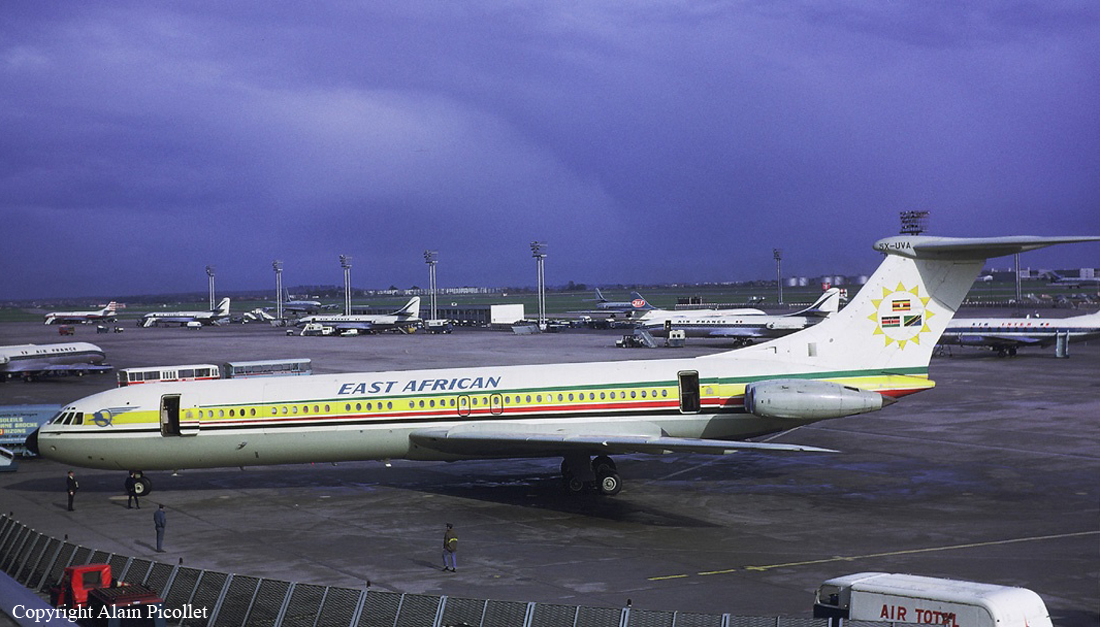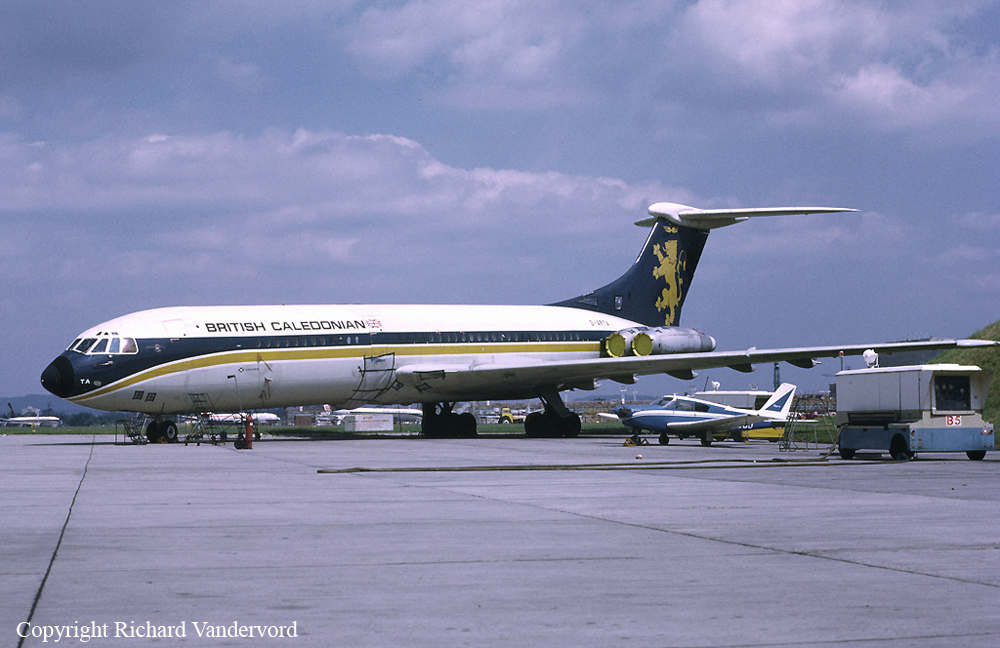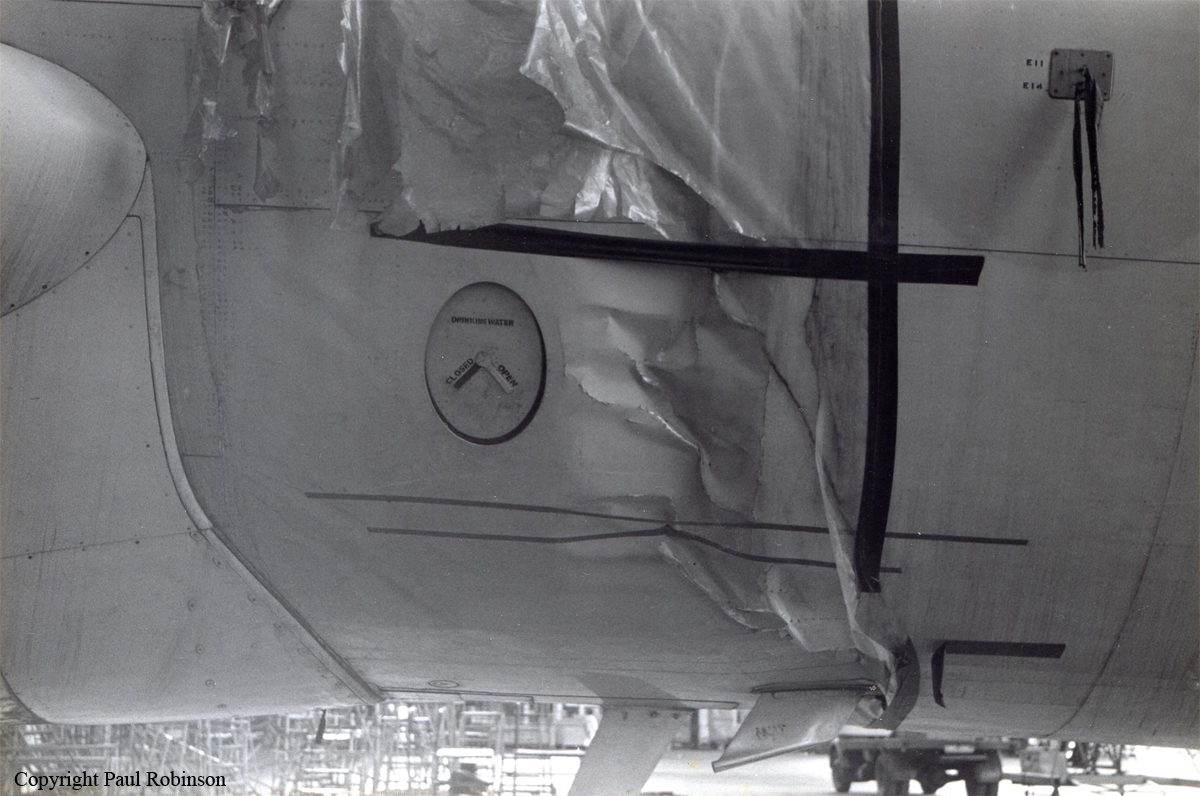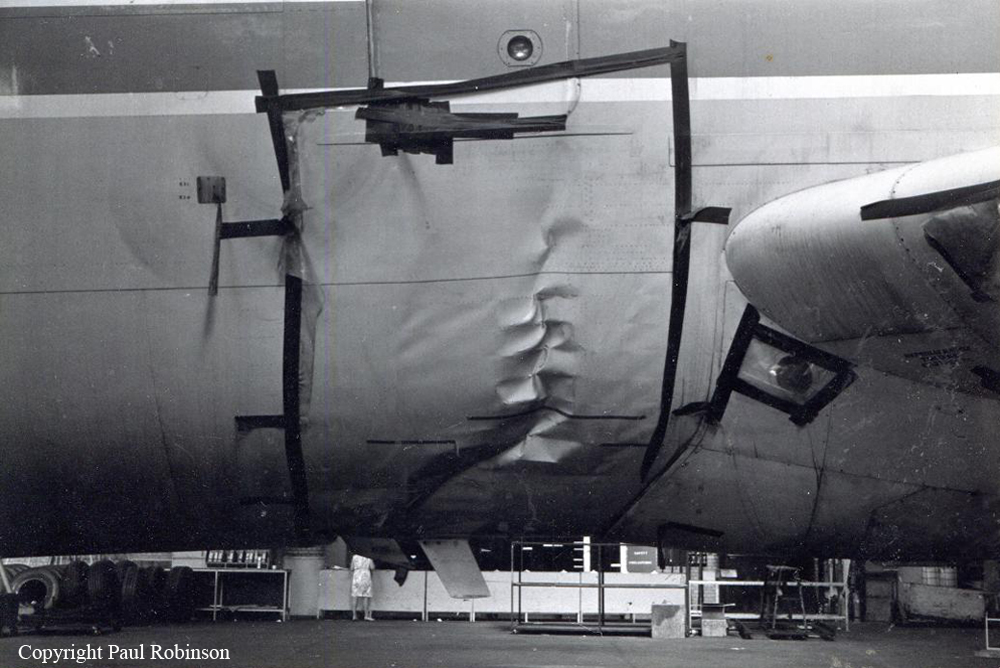Country
Crash of a Vickers VC-10-1154 in Addis Ababa: 43 killed
Date & Time:
Apr 18, 1972 at 0939 LT
Registration:
5X-UVA
Survivors:
Yes
Schedule:
Nairobi – Addis Ababa – Rome – London
MSN:
881
YOM:
1966
Flight number:
EC720
Crew on board:
11
Crew fatalities:
Pax on board:
96
Pax fatalities:
Other fatalities:
Total fatalities:
43
Captain / Total hours on type:
752.00
Copilot / Total hours on type:
640
Aircraft flight hours:
18586
Circumstances:
East African Airways Flight EC-720 to London via Addis Ababa and Rome departed Nairobi at 06:55 hours. The flight to Addis Ababa was uneventful and the VC10 landed there at 08:23. During the transit stop at Addis Ababa, some freight was off-loaded together with 40 passengers. Fifteen passengers joined the flight and the airplane was refueled. Start up clearance was given at 09:21 hours and the aircraft taxied out six minutes later via the eastern taxiway for takeoff on runway 07. The tower advised the aircraft that the wind was 5 knots and variable in direction. At 09:32 hours, as the aircraft was backtracking to the takeoff point, the pilot reported a number of dead birds on the runway. He requested that these birds be removed before the aircraft took off. A fire truck was dispatched to take care of this. The aircraft continued to backtrack down the runway and turned in the pad at the end. It then lined up on the runway and stopped a short distance from the threshold. At 09:38:40 hours, the tower cleared the aircraft for takeoff. Shortly after the aircraft had passed the mid-point of the runway, at or just below the V1 speed, the nose wheel ran over a steel jacking pad. This jacking pad belonged to a Cessna 185 that had departed 4:40 earlier. The pad punctured the right hand nose wheel tire. A loud bang was heard and severe vibration was felt on the flight deck. Almost immediately after the nose wheel tire had burst, the nose of the aircraft rose momentarily and then come down. The flight crew decided to abort the takeoff. The engines were throttled back and reverse thrust was selected. The aircraft continued down the runway, veering slightly to the right. Then the no.1 rear main tire burst. Just before the aircraft reached the end of the runway, it veered slightly to the left and ran approximately parallel to the centre line. After crossing a storm drain located at the end of the runway at right angles to the centre line, the aircraft became momentarily airborne as it left the lip of the embankment on which the 60 m stopway was laid. As it did so, the left outer wing of the aircraft struck a steel lattice tower forming part of the approach lighting system to runway 25. This ruptured the no. 1A fuel tank and the released fuel promptly ignited. Sixty meters beyond the end of the runway the aircraft fell heavily on to the lower ground 10.6 m below the runway level. It broke up immediately on impact and after sliding a short distance, came to rest and caught fire.
Probable cause:
The accident was due to a partial loss of braking effort arising from incorrect re-assembly of part of the braking system, as a result of which the aircraft could not be stopped within the emergency distance remaining following a properly executed abandoned take-off procedure.
Final Report:

Crash of a Vickers VC-10-1109 at London-Gatwick
Date & Time:
Jan 28, 1972
Registration:
G-ARTA
Survivors:
Yes
Schedule:
London-Heathrow - London-Gatwick
MSN:
803
YOM:
1962
Crew on board:
4
Crew fatalities:
Pax on board:
0
Pax fatalities:
Other fatalities:
Total fatalities:
0
Circumstances:
The crew was completing a positioning flight from Heathrow to Gatwick. After touchdown on runway 08, the pilot selected spoilers and reverse thrust when the airplane became airborne again then landed back heavily and bounced twice. The fuselage was bent just prior to the wings, a tyre on the nose wheel burst and a wheel separated. The aircraft rolled for several hundred meters before coming to rest. All four crew members escaped uninjured while the aircraft was damaged beyond repair.



Crash of a Vickers VC-10-1101 in Lagos: 87 killed
Date & Time:
Nov 20, 1969 at 0845 LT
Registration:
5N-ABD
Survivors:
No
Schedule:
London - Rome - Kano - Lagos
MSN:
804
YOM:
1962
Flight number:
WT825
Crew on board:
11
Crew fatalities:
Pax on board:
76
Pax fatalities:
Other fatalities:
Total fatalities:
87
Aircraft flight hours:
18431
Circumstances:
Following an uneventful flight from Kano, the crew started the descent to Lagos-Ikeja Airport. The captain was cleared for a straight-in approach but encountered low visibility due to foggy conditions. On final, the crew failed to realize his altitude was insufficient when the airplane struck trees and crashed 13 km short of runway 19. The aircraft was totally destroyed and all 87 occupants have been killed.
Probable cause:
The exact cause of the accident could not be determined with certainty. The FDR was found undamaged but the British AAIB engineers reported it was unreadable as the data consisted only of a stream of alternating ones and zeros. Apparently there had been a fault in one of the logic units of the system, something which could not be detected from the flight deck. No readable data could be reconstructed from this. Nevertheless, it is believed that the flying crew led the aircraft descending below the minimum safe altitude while still under control.


